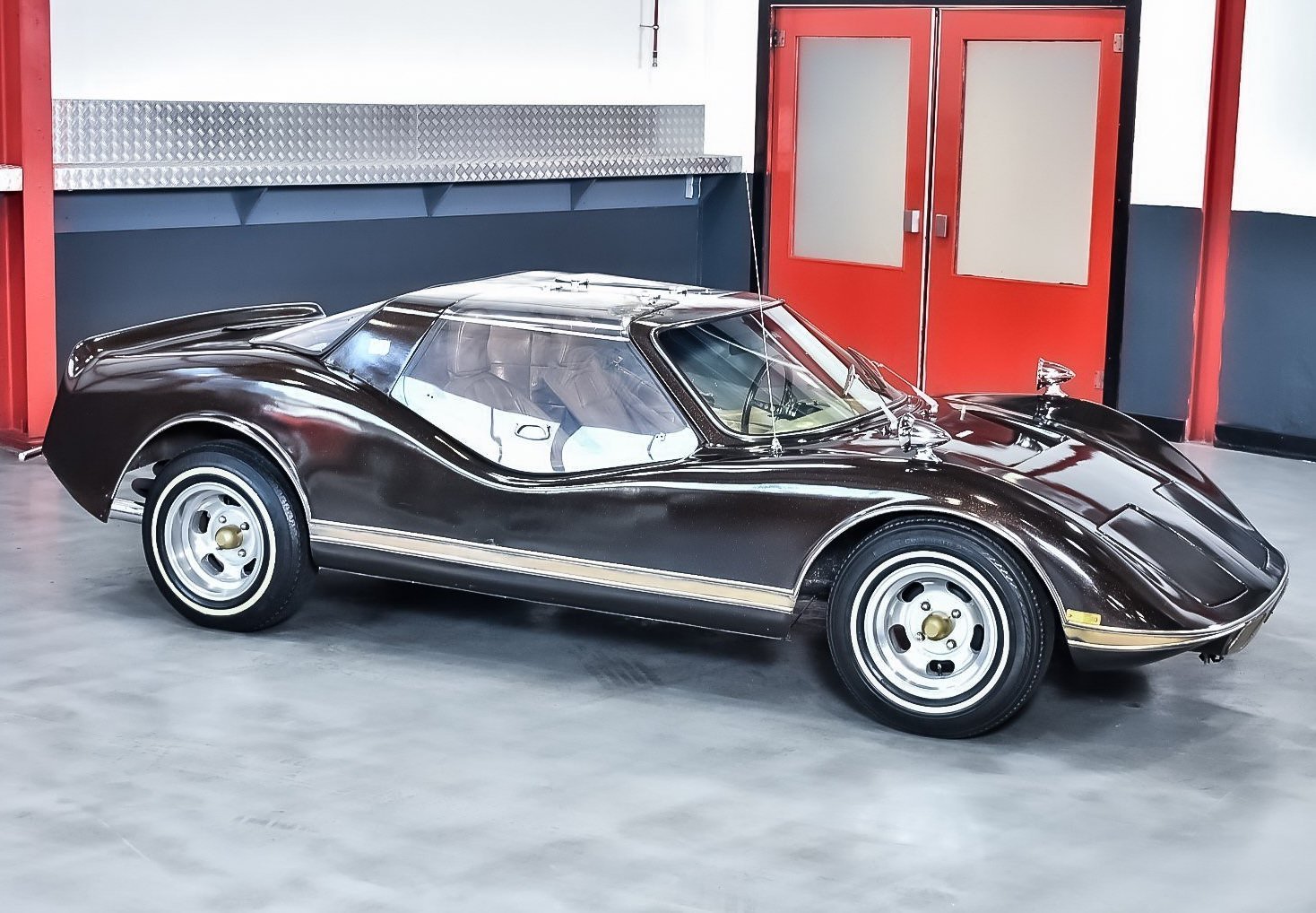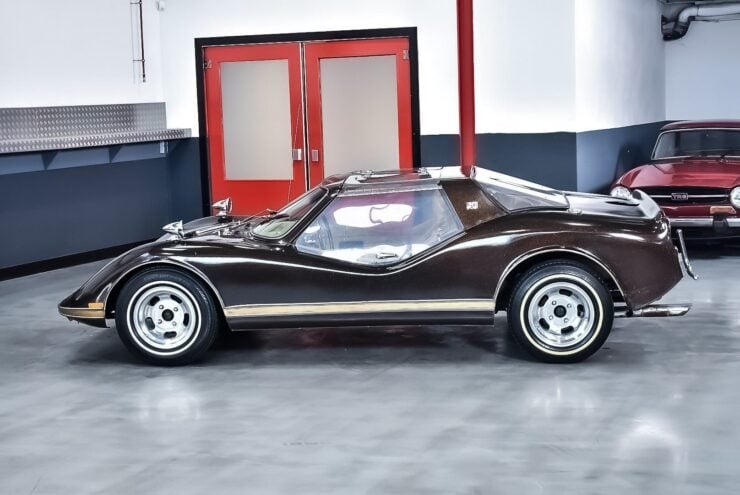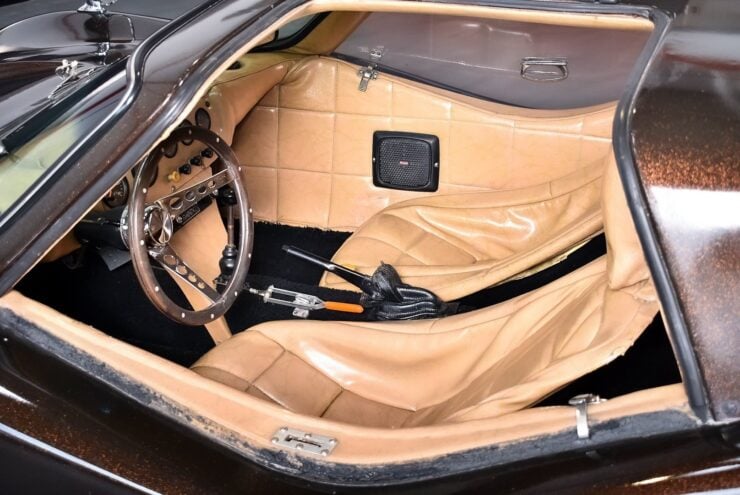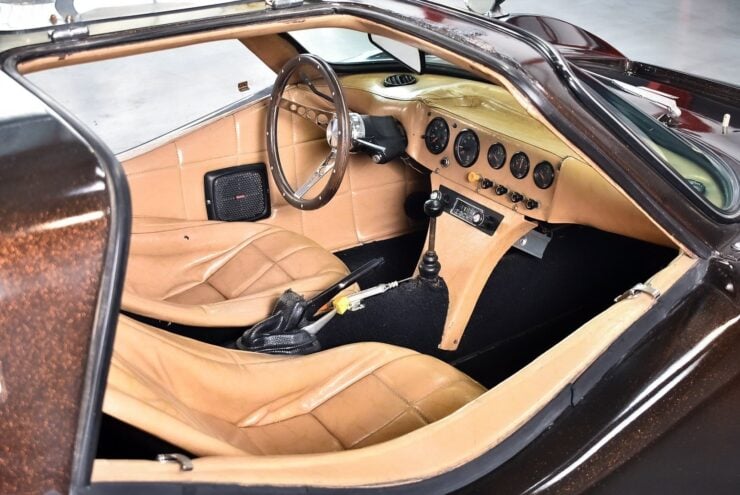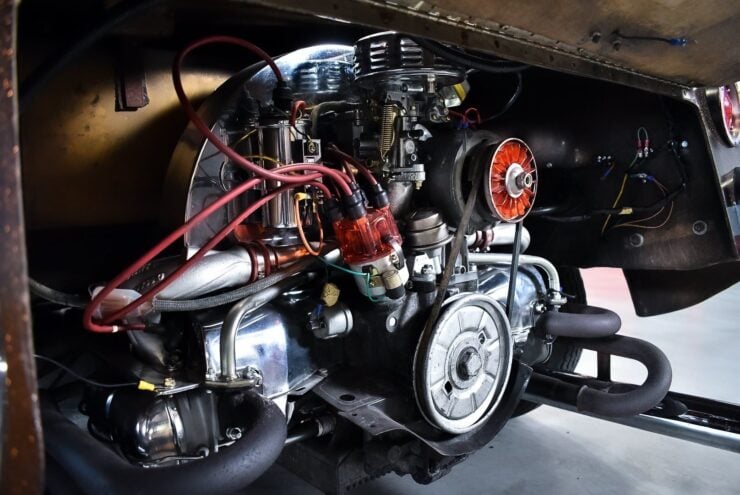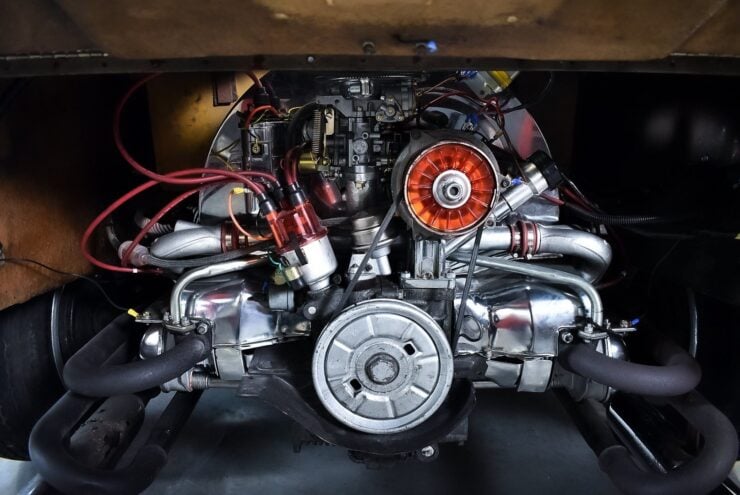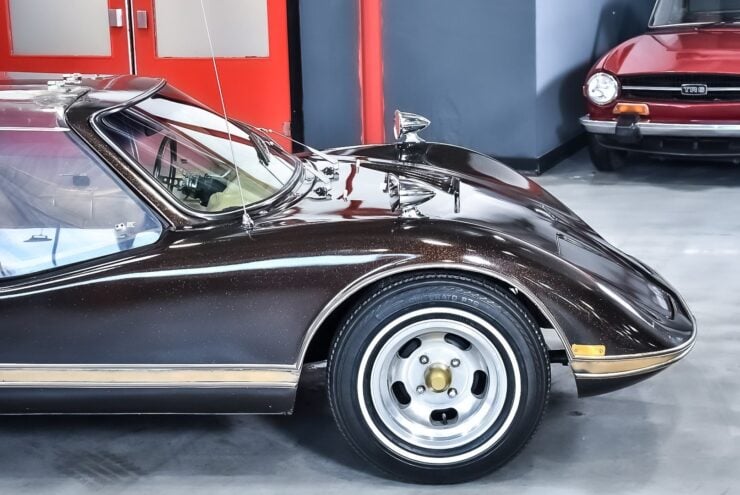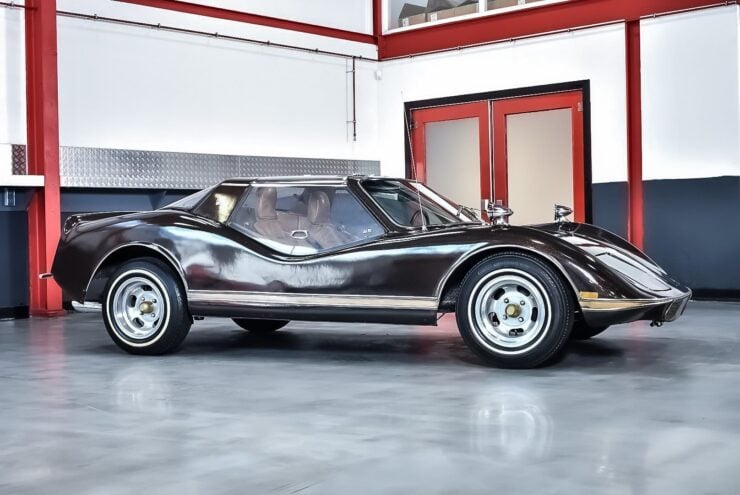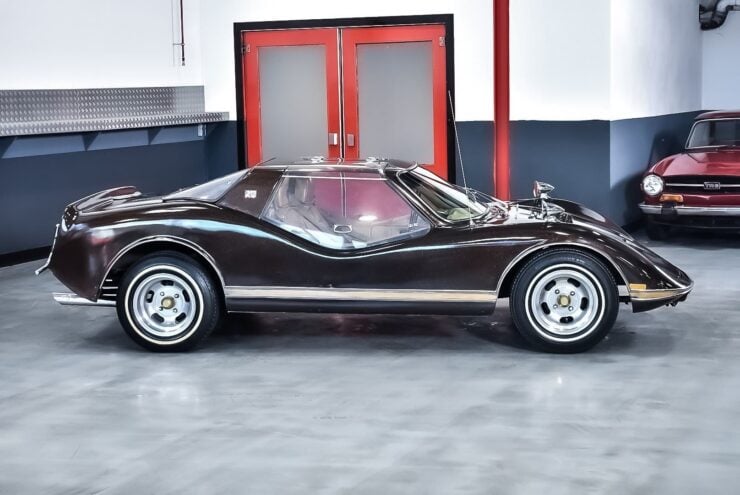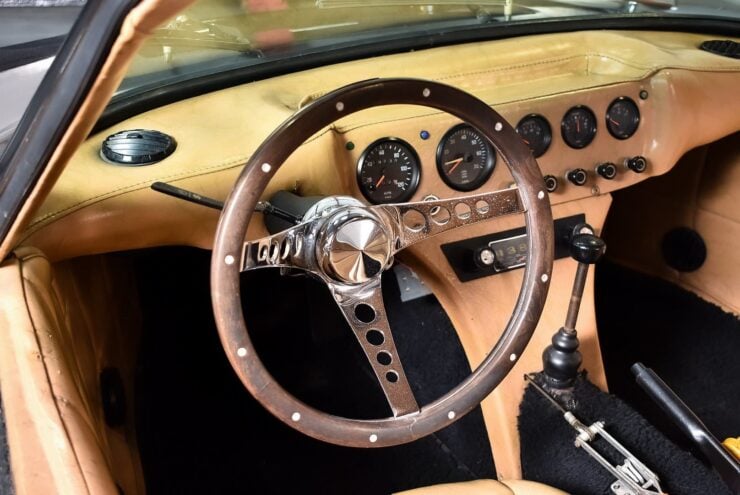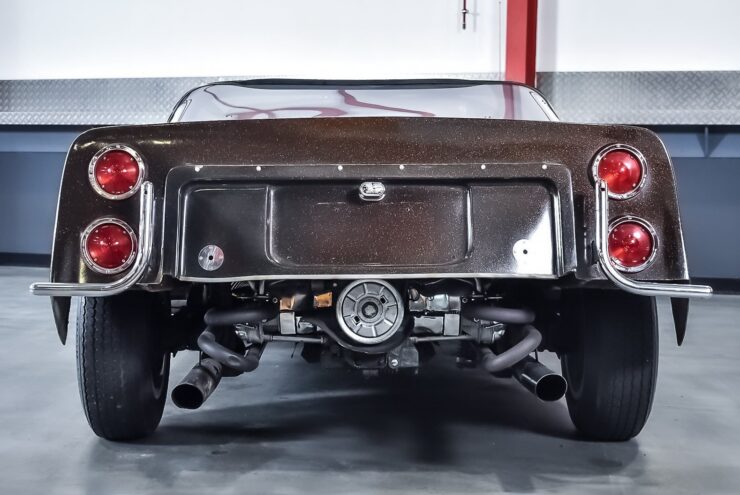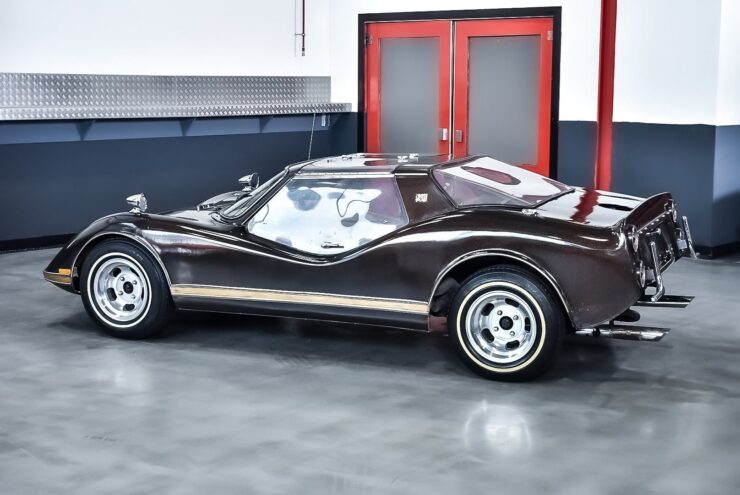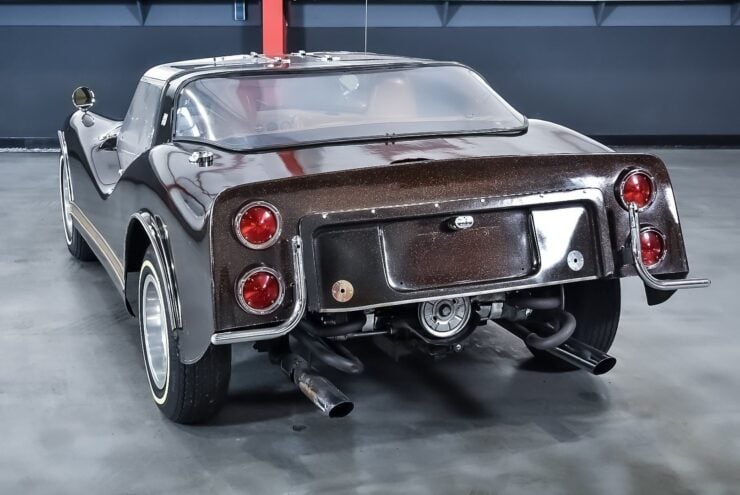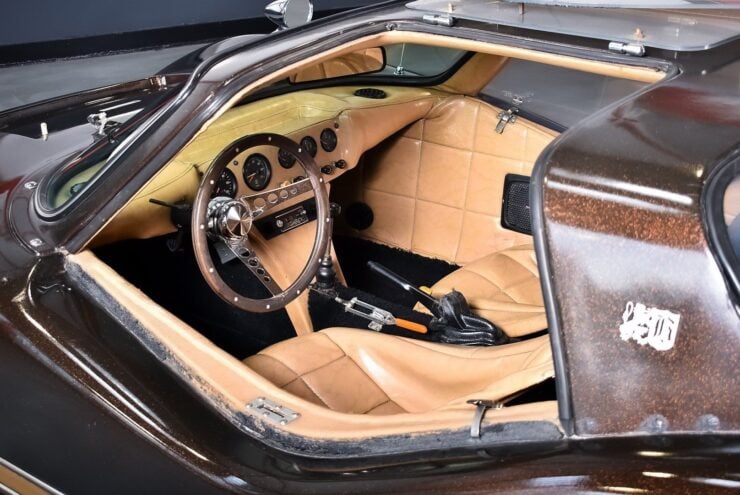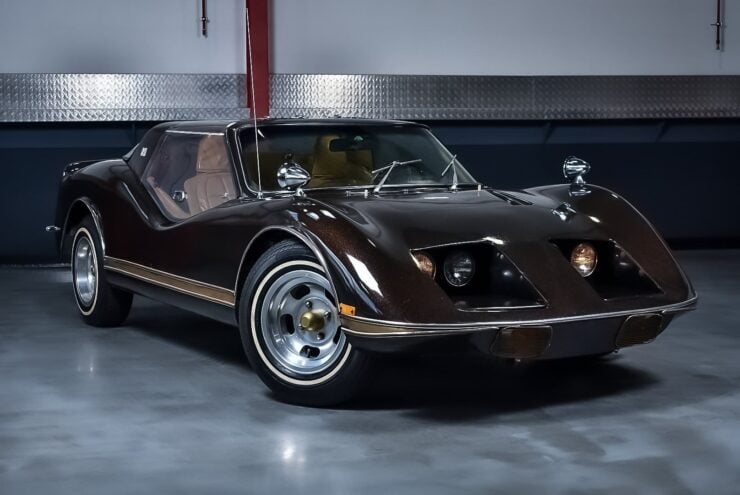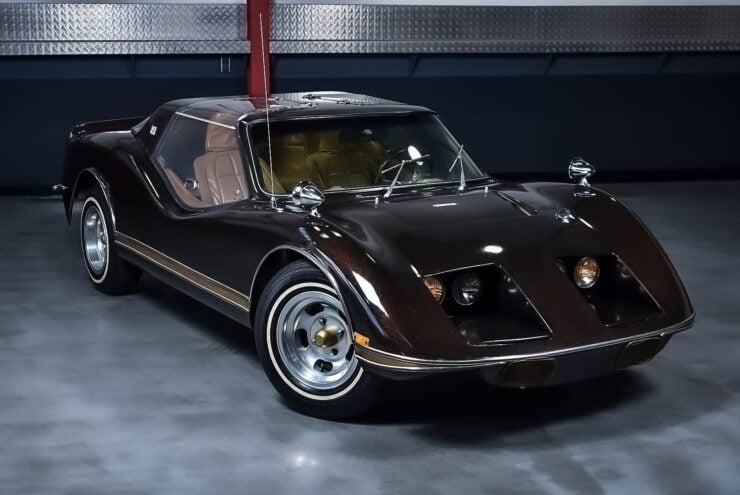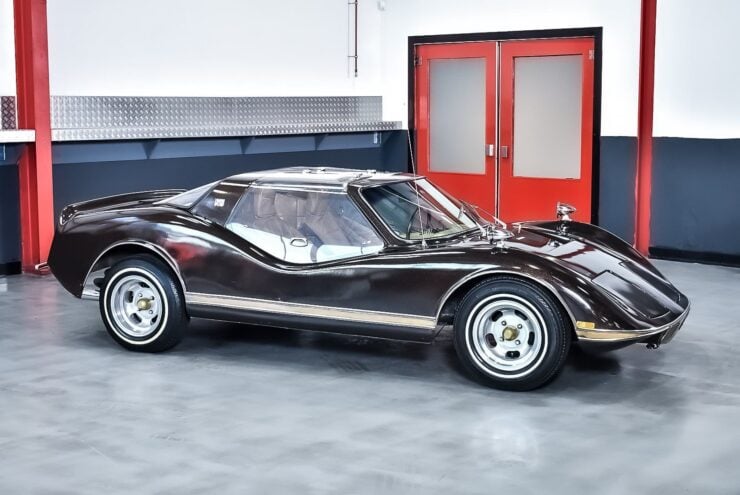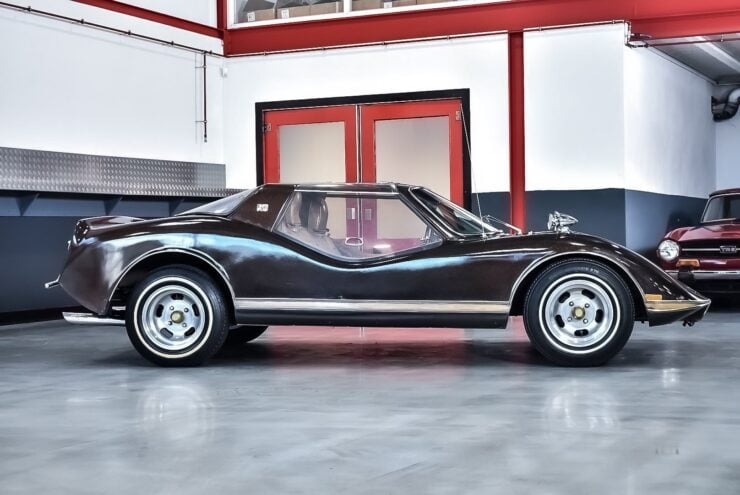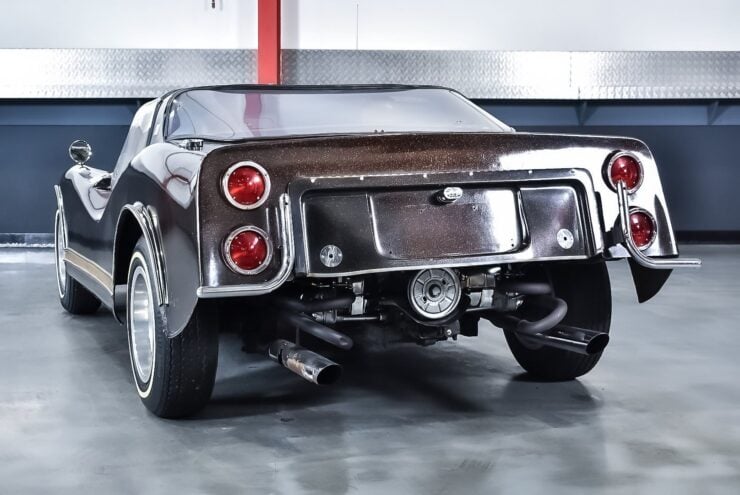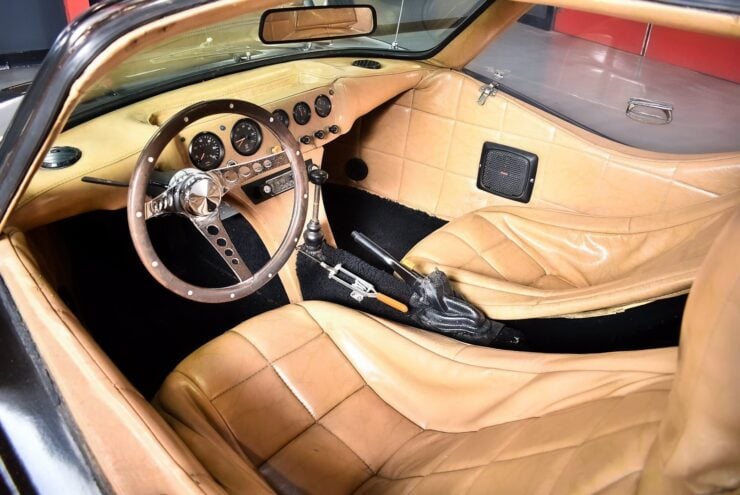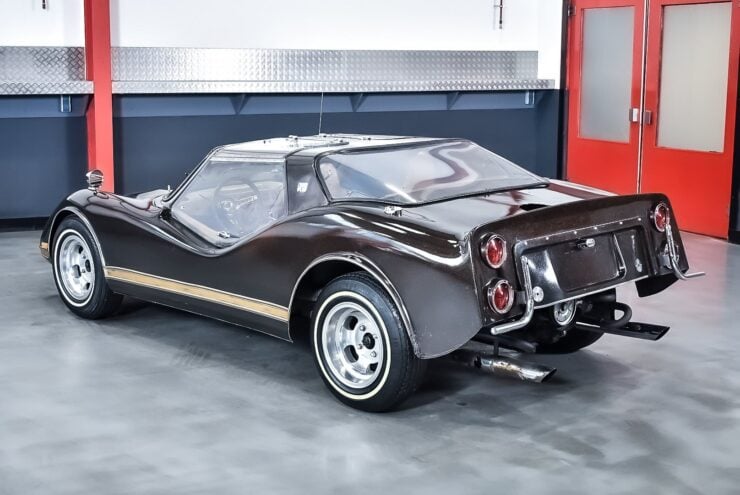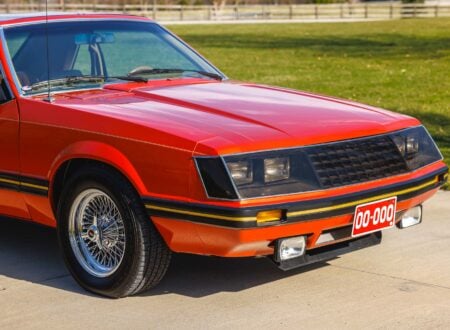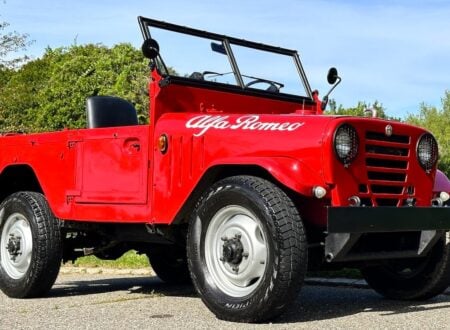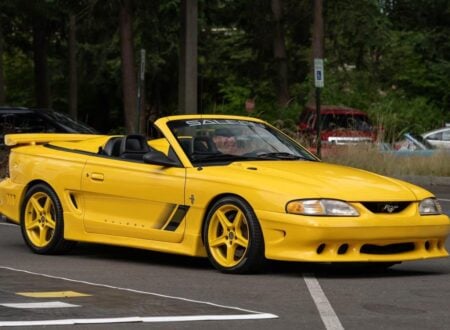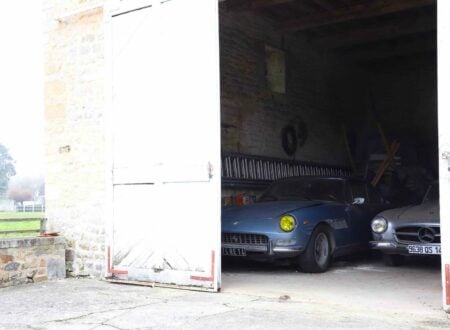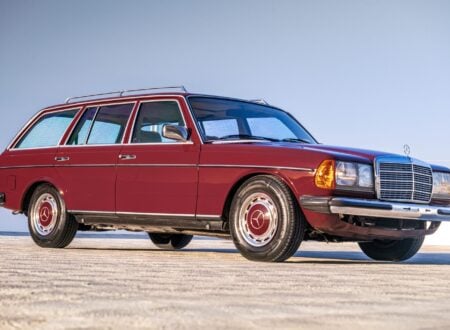This is an original 1977 Bradley GT “Gullwing” Coupe, an unusual vehicle that was developed in Plymouth, Minnesota as an affordable sports car that the average person could build in their own garage with hand tools.
While the Bradley GT will never be considered a high-brow sports car, it did offer an affordable pathway to sports car ownership for working class Americans. That said, a few celebrities also owned them, including Liberace, Jeff Dunham, Ed Begley Jr., and Barry Goldwater.
Fast Facts – The Bradley GT “Gullwing” Coupe
- The Bradley GT “Gullwing” was a kit car built on a VW Beetle chassis with a lightweight fiberglass body, offering an affordable entry into sports car ownership for many. It featured distinctive gullwing doors and owners could improve performance with various upgrades from the extensive Beetle aftermarket parts catalog.
- Bradley Automotive, founded by Gary Courneya and David Bradley Fuller, launched the Bradley GT after a successful marketing campaign, even before the car’s design was finalized. The car was sold primarily as a kit, though completed turn key cars were also available. The company eventually achieved over $6 million in sales by 1977.
- The Bradley GT used VW Beetle mechanicals, including a 1.6 liter flat-four engine, suspension, and brakes, making it easy to maintain and to upgrade if owners wished. Weighing 400 pounds less than the Beetle, the lightweight body improved performance, and the car’s unique design attracted both working-class owners and celebrities alike.
- The Bradley GT shown here, offered for sale in the Netherlands, is finished in bronze with a cream stripe and features alloy wheels, whitewall tires, and a beige interior. With under 20,000 miles on the odometer, it retains its original U.S. title and European import documentation, with VAT paid.
Bradley Automotive
When Bradley Automotive first started advertising their first car, the Bradley GT, in the back of car magazines in 1970 they asked potential customers to send them $1 for a brochure. The truth was that at the time, neither the brochure nor the car yet existed.
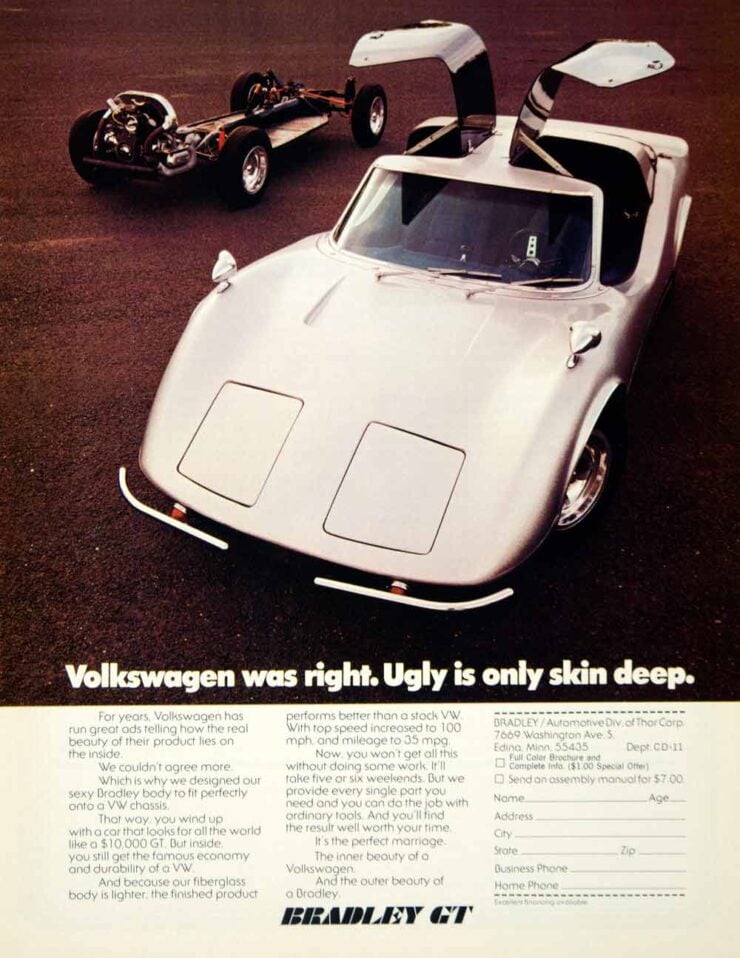 Period advertising for the Bradley GT showcased the car’s VW Beetle platform, using it as a positive rather than a negative and promoting the low cost of the kit. Image courtesy of Bradley Automotive.
Period advertising for the Bradley GT showcased the car’s VW Beetle platform, using it as a positive rather than a negative and promoting the low cost of the kit. Image courtesy of Bradley Automotive.The positive response to the advertising campaign was such that company founders Gary Courneya and David Bradley Fuller quickly got the design for the Bradley GT completed, and the brochures followed soon after.
The two men already had experience running Gary’s Bug Shop together, where Gary handled the sales and David handled the hands-on fiberglass work building the parts. Gary’s Bug Shop produced a number of fiberglass bodies for the VW Beetle platform chassis, including a Meyers Manx-inspired dune buggy, and so they weren’t novices.
Funding for Bradley Automotive kicked off with the two men offering shares in the new company at $1 each, they sold 80,000 of them, and this would be the seed capital used to launch the new firm.
Much like their earlier designs, the Bradley GT consisted of a new lightweight fiberglass body on a VW Beetle platform. The original engine, transmission, suspension, brakes, and steering all remained in place, and owners could apply their own performance upgrades as they wished to increase power.
Given the extensive catalogue of parts for the Beetle, the only limit was the owner’s imagination, and the depth of their wallet. Thanks to the lightweight body, the curb weight of the Bradley GT was only 1,600 lbs (726 kgs), approximately 400 lbs lighter than the steel-bodied Beetle, which also helped with performance off the line.
When customers ordered their Bradley GT they could opt for a kit version, or they could have the vehicle built to completion by Bradley Automotive. The kit option, which was far cheaper, was by far the most common choice, and as a result there is a great deal of variation in the final specification of many GTs.
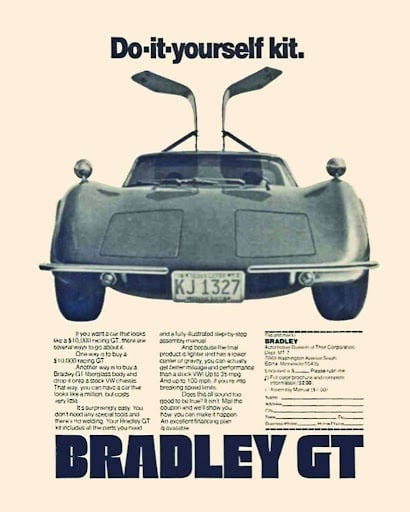 The two most distinctive features of the Bradley GT were the large pop-up headlights, and the all-perspex gullwing doors. Image courtesy of Bradley Automotive.
The two most distinctive features of the Bradley GT were the large pop-up headlights, and the all-perspex gullwing doors. Image courtesy of Bradley Automotive.The company went through a tumultuous few years, and needed capital injections more than once, but by 1977 they had over $6,000,000 USD in sales, and net profits well into the six figures.
Sadly things didn’t remain positive for long, many staff left to work for the competition over at Fiberfab, and Bradley Automotive was changed to the Classic Electric Car Corporation, with plans to develop and sell an electric version of the Bradley GT II.
A handful of these electric Bradley GT II vehicles were made, simple electric cars with a rear electric motor and an array of lead acid car batteries providing power. Ultimately the company would fail by 1981 having accumulated $2.5 million in debt.
The surviving examples of the Bradley GT, and the GT II, remain popular in the kit car world thanks to their unusual styling, decent performance, and the fact that they’re typically available at affordable prices.
The 1977 Bradley GT Gullwing Shown Here
The vehicle you see here is an original Bradley GT from 1977. It features the distinctive perspex gullwing doors that provide access to the interior, in fact it may be the least expensive production car ever offered with gullwing doors.
This example is finished in bronze metallic paint with a cream stripe at the belt line, it has pop-up headlights and a discreet rear spoiler, alloy wheels, white wall tires, a wood-rimmed steering wheel, and a beige interior.
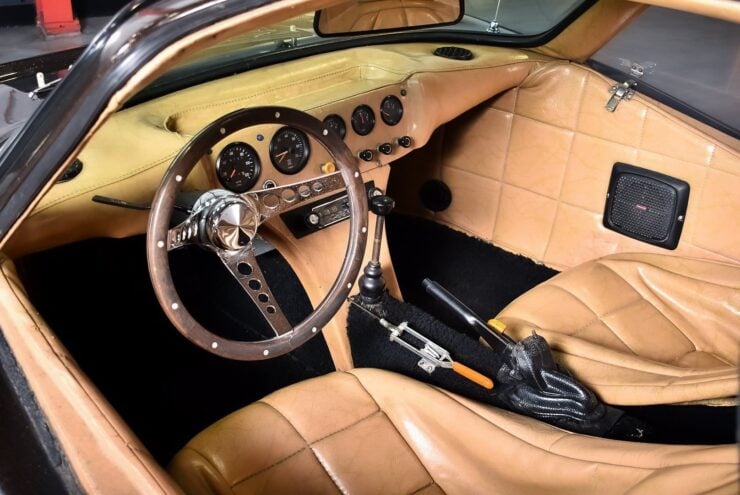 The interior of this car is well-appointed, with carpeting, full upholstery, a wood-rimmed steering wheel, a stereo, and dual front bucket seats.
The interior of this car is well-appointed, with carpeting, full upholstery, a wood-rimmed steering wheel, a stereo, and dual front bucket seats.Power is provided by a 1.6 liter VW Beetle flat-four mated to the correct 4-speed manual transaxle. The car has just under 20,000 miles on the odometer and it comes with its original US title and EU import documentation, with VAT already paid in full.
It’s now being offered for sale out of Schiedam in the Netherlands on Car & Classic in an online auction. If you’d like to read more about it or register to bid you can visit the listing here.
Images courtesy of Car & Classic

